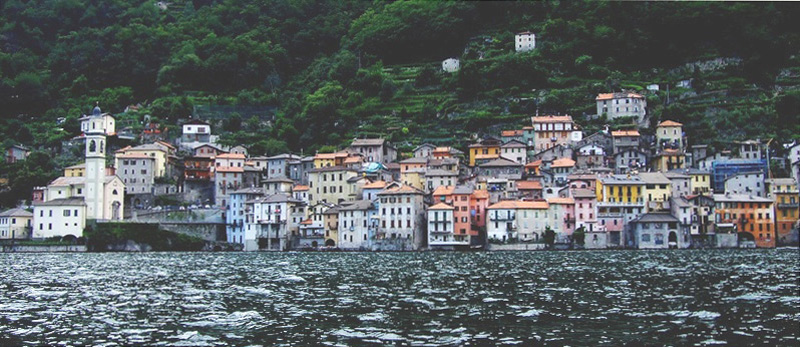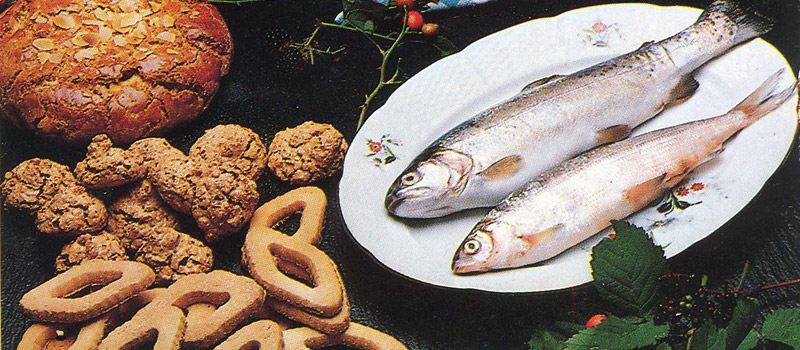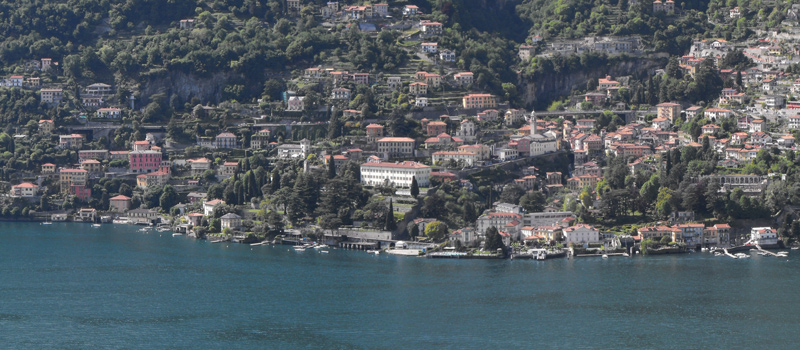
The parish church dedicated to Saints George and Cajetan of Thiene is situated in the centre of Laglio, just a few steps from the Lake Como waterfront. Built in 1619, the church was consecrated by Bishop Lazzaro Carafino in 1630. Some sources, however, mention a previous church thought to have been built in the 11th century. Visiting in 1593, Bishop Feliciano Ninguarda in fact describes a very large church with three naves and two side chapels oriented in the opposite direction to the current church.
The church of San Giorgio has a simple gabled facade, a single nave and five side chapels. An inscription in the architrave indicates the year of foundation as 1619, while the tympanum contains a statue of Saint George. Located to the side of the portal are three stone benches, while on the left-hand side of the church stands the belltower. Inside, a wooden crucifix positioned above the pulpit is by Antonio Salterio, father of Stefano, both of whom were Lario-born sculptors.
The first chapel on the left hand side of the church is dedicated to the Madonna of the Rosary and contains two frescoes by the artist Antonio Sibella and an altar with stucco work by Stefano Salterio. The second chapel, dedicated to San Giuseppe, holds magnificent sculptures attributed to the stuccatore (plaster artist) from the Val d‘Intelvi, Giovanni Angelo Sala. Moving to the right-hand side, the first chapel was originally dedicated to San Gaetano but is today used as a Baptistery. The second, dedicated to San Nicola, contains an altarpiece by Michelangelo Buzzi, while the third is dedicated to Sant'Antonio of Padua, and contains sculptures and stucco work by the Salas.
On the right hand of the church is the Oratorio dei Confratelli del Santissimo Sacramento - a square room with large windows and wooden stalls along the walls. In the centre of the room stands a large altar attributed to Stefano Salterio and a painting by Innocenzo Carloni of the Madonna with the Baby Jesus.

Brienno preserves its origins of a medieval village, the stone houses based in the water, the narrow streets barely separating the buildings; beautiful porticos, stairways and underpasses make this place a true gem.
Brienno
Dried Shad (Agone), called Missoltini or Missultin, were at one time a precious food for inhabitants of Lake Como, the particular processing allowed them to be conserved for more than a year, excellent traditional Lake Como cuisine.
Lario Cuisine
Moltrasio is situated on the western bank of Lake Como and extends from the waters of the lake to the slopes of Monte Bisbino, its sunny location and mild climate have made Moltrasio a popular holiday destination.
Moltrasio